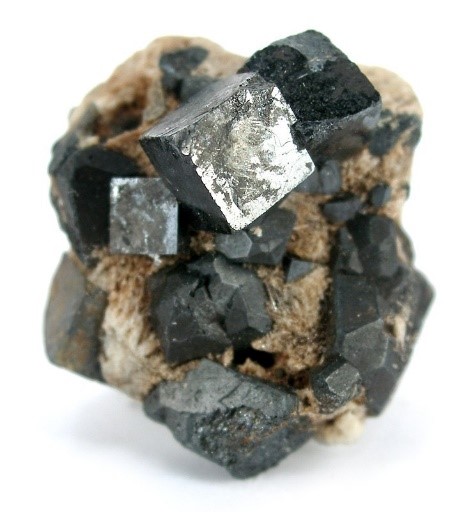Description

Disclaimer: Copyright infringement not intended.
Context
- In a new study, scientists have been able to significantly improve the efficiency of a particular type of this material, known as a lead-halide perovskite.
- By combining the perovskite with a substrate of metal rather than glass, light conversion efficiency was increased by 250 percent.
.jpeg)
What is a perovskite?
- Perovskite is a calcium titanium oxide mineral composed of calcium titanate (chemical formula CaTiO3).
- A large number of different elements can be combined together to form perovskite structures.
- Using this compositional flexibility, scientists can design perovskite crystals to have a wide variety of physical, optical, and electrical characteristics. Perovskite crystals are found today in ultrasound machines, memory chips, and now – solar cells.
- The mineral was discovered in the Ural Mountains of Russia by Gustav Rose in 1839.
- Perovskite occurs as small anhedralto subhedral crystals filling interstices between the rock-forming silicates. Perovskite is a common mineral in the Ca-Al-rich inclusions found in some chondritic meteorites.
- In stars and brown dwarfs the formation of perovskite grains is responsible for the depletion of titanium oxide in the photosphere.
Clean energy applications of perovskites
- All photovoltaic solar cells rely on semiconductors — materials in the middle ground between electrical insulators such as glass and metallic conductors such as copper — to turn the energy from light into electricity. Light from the sun excites electrons in the semiconductor material, which flow into conducting electrodes and produce electric current.
- Silicon has been the primary semiconductor material used in solar cells since the 1950s, as its semiconducting properties align well with the spectrum of the sun’s rays and it is relatively abundant and stable. However, the large silicon crystals used in conventional solar panels require an expensive, multi-step manufacturing process that utilizes a lot of energy. In the search for an alternative, scientists have harnessed the tunability of perovskites to create semiconductors with similar properties to silicon. Perovskite solar cells can be manufactured using simple, additive deposition techniques, like printing, for a fraction of the cost and energy. Because of the compositional flexibility of perovskites, they can also be tuned to ideally match the sun’s spectrum.
- In 2012, researchers first discovered how to make a stable, thin-film perovskite solar cell with light photon-to-electron conversion efficiencies over 10%, using lead halide perovskites as the light-absorbing layer. Since then, the sunlight-to-electrical-power conversion efficiency of perovskite solar cells has skyrocketed.

Closing Thoughts
- In a recent study, scientists have been able to significantly improve the efficiency of a particular type of this material, known as a lead-halide perovskite. By combining the perovskite with a substrate of metal rather than glass, light conversion efficiency was increased by 250 percent.
Cheaper to produce and better at absorbing higher energy forms of light, perovskite materials have the potential to replace silicon in solar panel technology.
|
PRACTICE QUESTION
Q) What is a perovskite? Write a note on the Clean energy applications of perovskites.
|

https://www.sciencealert.com/scientists-boost-the-efficiency-of-a-cheap-and-promising-solar-panel-material-by-250











